Rúben Amorim has officially become Manchester United‘s new coach, and fans hope to familiarize themselves with his tactics before the new era begins.
In modern football, working on all aspects of the game is no longer a luxury or an additional advantage but an obligation.
Sporting CP hasscored the most goals from corners in Primeira Liga for three seasons in a row!
In this tactical analysis, we will explore Rúben Amorim’s tactics in attacking corners and what fans can expect from him regarding this aspect.
Rúben Amorim Tactics From Set-Pieces – Short Corners
Let’s start with the most significant aspect in which Sporting CP stood out with Rúben Amorim: exploiting short corners.
Rúben Amorim’s Use Of Overlapping
First of all, Amorium didn’t prefer to start having a short-option player.
Instead, he liked to ask a player to sprint from the six-yard line towards the taker to catch this area empty without crowding it from the beginning; this works simply in case only one defender goes there.
In the photo below, the opponent defends zonally with only a man marker (orange) and a rebound defender standing on the edge of the box (pink).
The main attacking structure of Sporting CP consists of six players in the box: the taker, two rebound players on the edge of the box, and a security player at the back.
The blue attacker runs suddenly from the first zonal defender’s blind side so that he will arrive a second earlier than him.
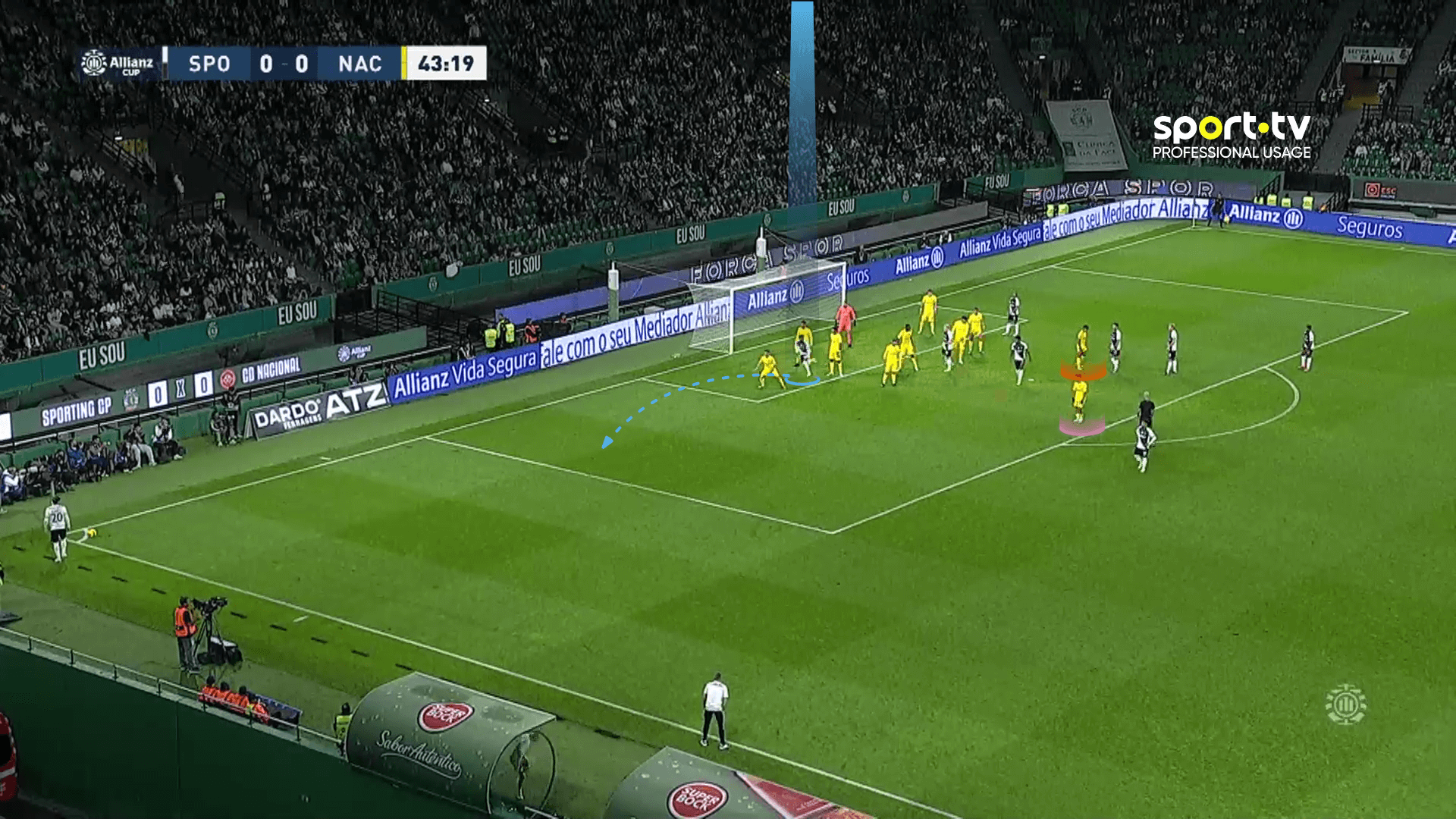
In the photo below, it is clear that only the first zonal defender goes to defend the short corner from the box while the rebound attacker fixes the rebound defender.
This causes a 2v1 situation when the taker joins the game with a curved run to avoid offside.
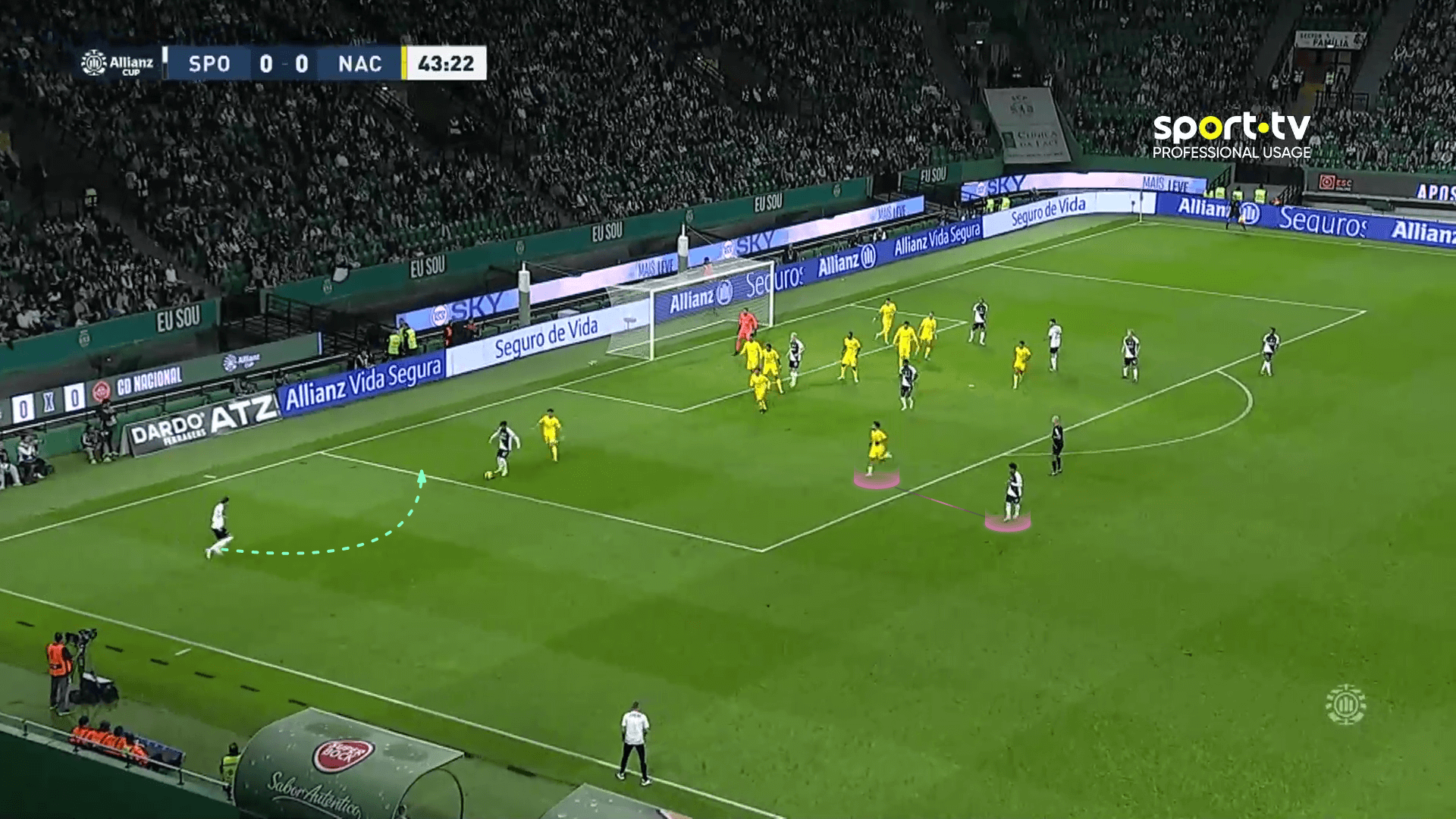
In the photo below, the short-option attacker drags the defender to empty the shown area for the taker.
At the same time, an attacker on the near post tries to attract the attention of the zonal line to slow down their movement, trying to make the taker avoid the offside.
Three attackers, at different heights, go to the far post to receive the cross.
Two of them run inside to take the attention of the last zonal defenders for the targeted player who moves outside.
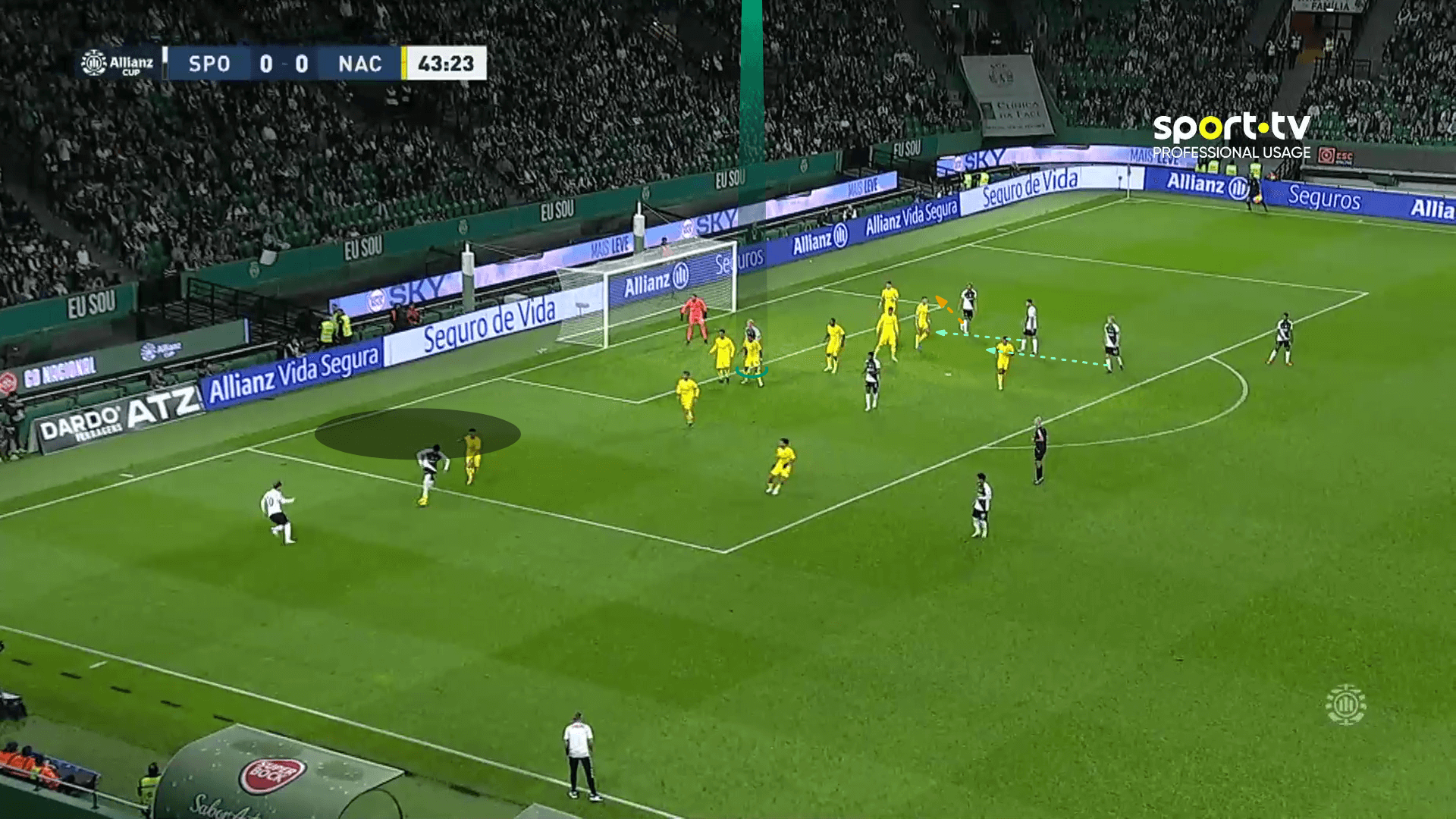
So what did they do against teams that asked two players to go to defend the short corner?
In the photo below, the opponent defends zonally with only a man marker (orange), with a rebound defender (pink) on the edge of the box.
When the blue attacker goes to receive the short pass, two defenders in yellow go with him, creating a 2v2 situation when the taker joins the game.
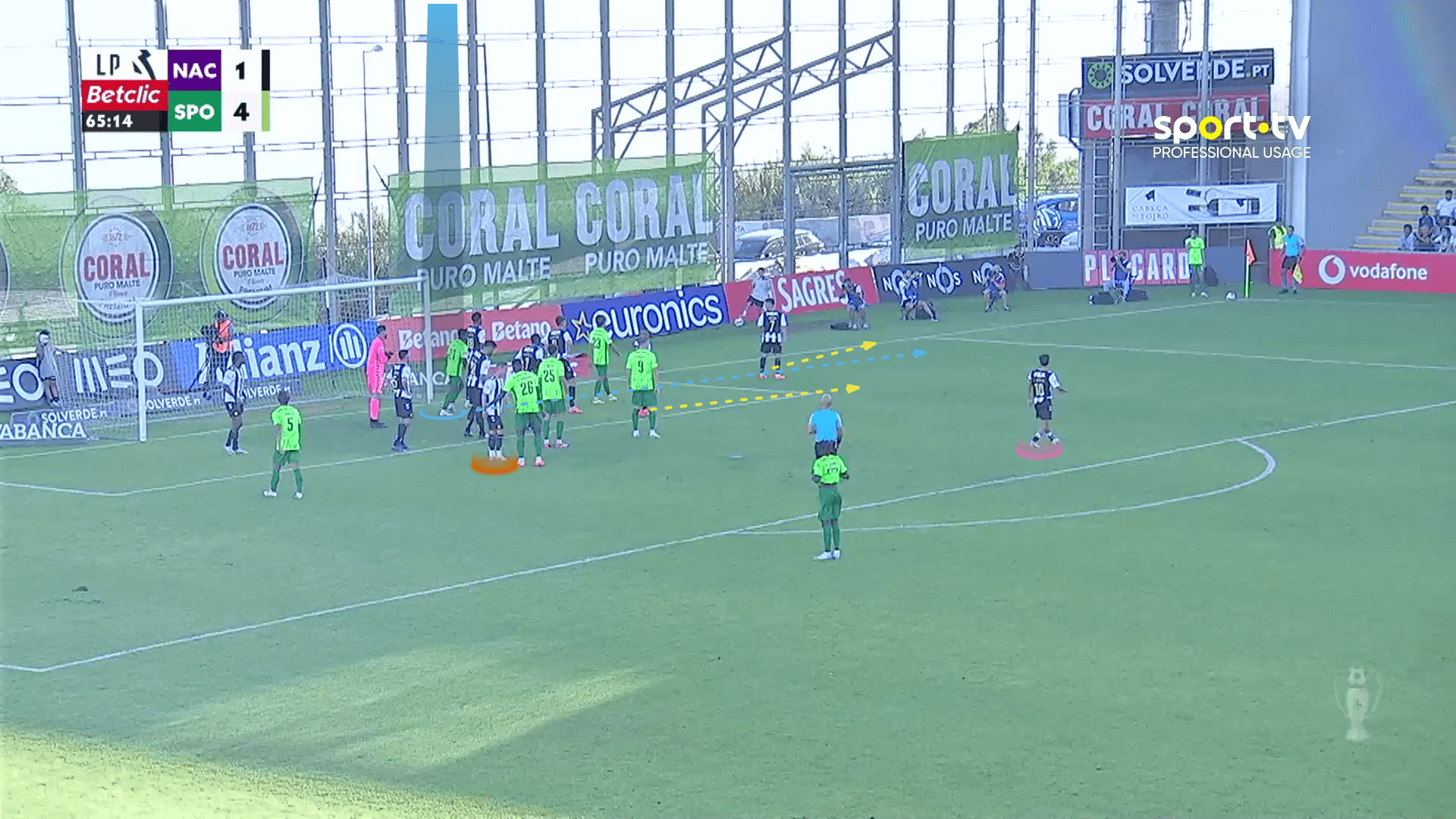
As shown in the two photos below, they have a good plan to deal with that by asking one of their two rebound players to start a bit back and join the game, suddenly overlapping behind the taker to be in a 3v2 situation, having positional superiority, too.
The attacker (white) also has a crucial role: he must tell the zonal defender behind him not to go there to defend against this 3v2 situation.
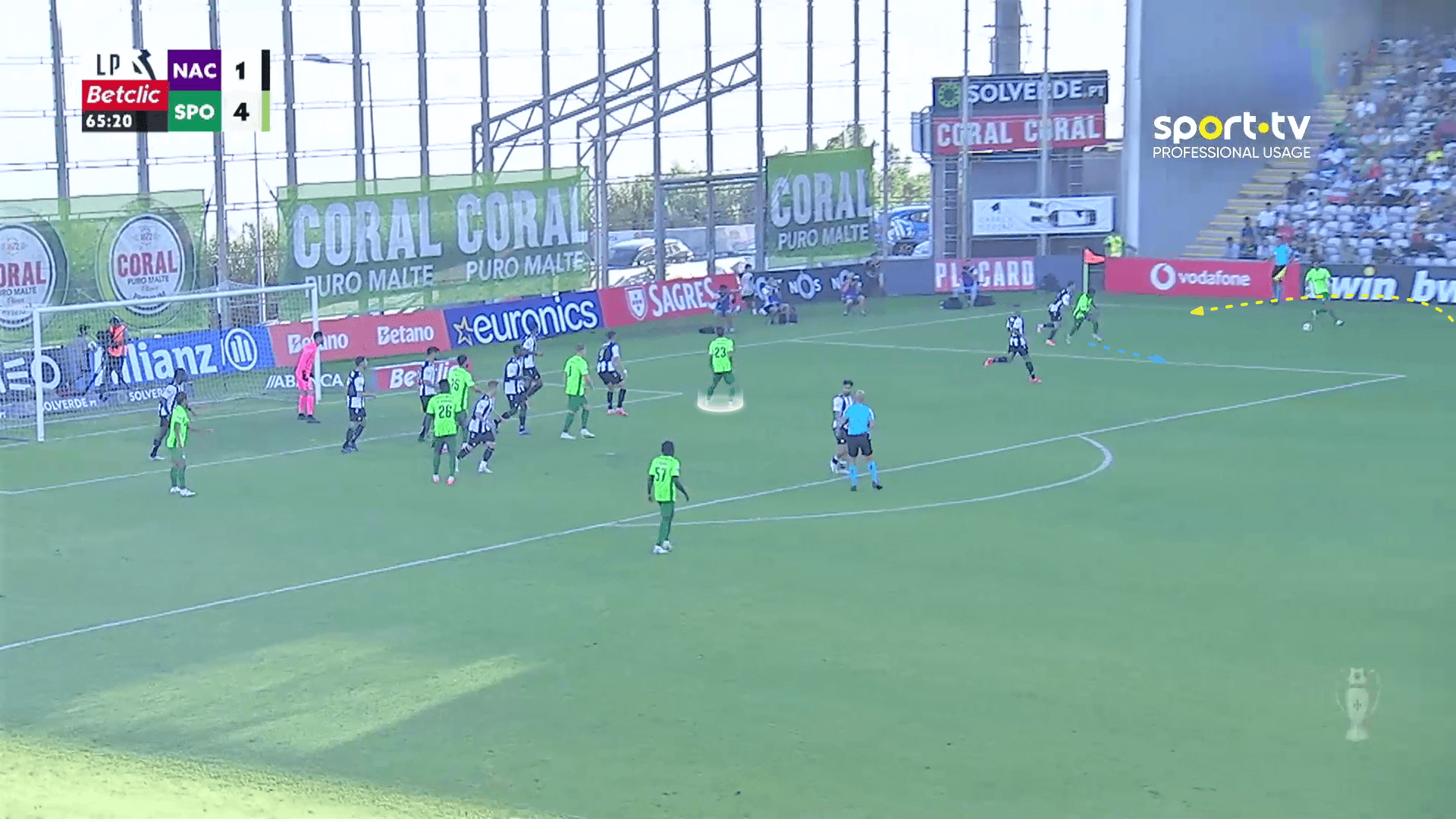
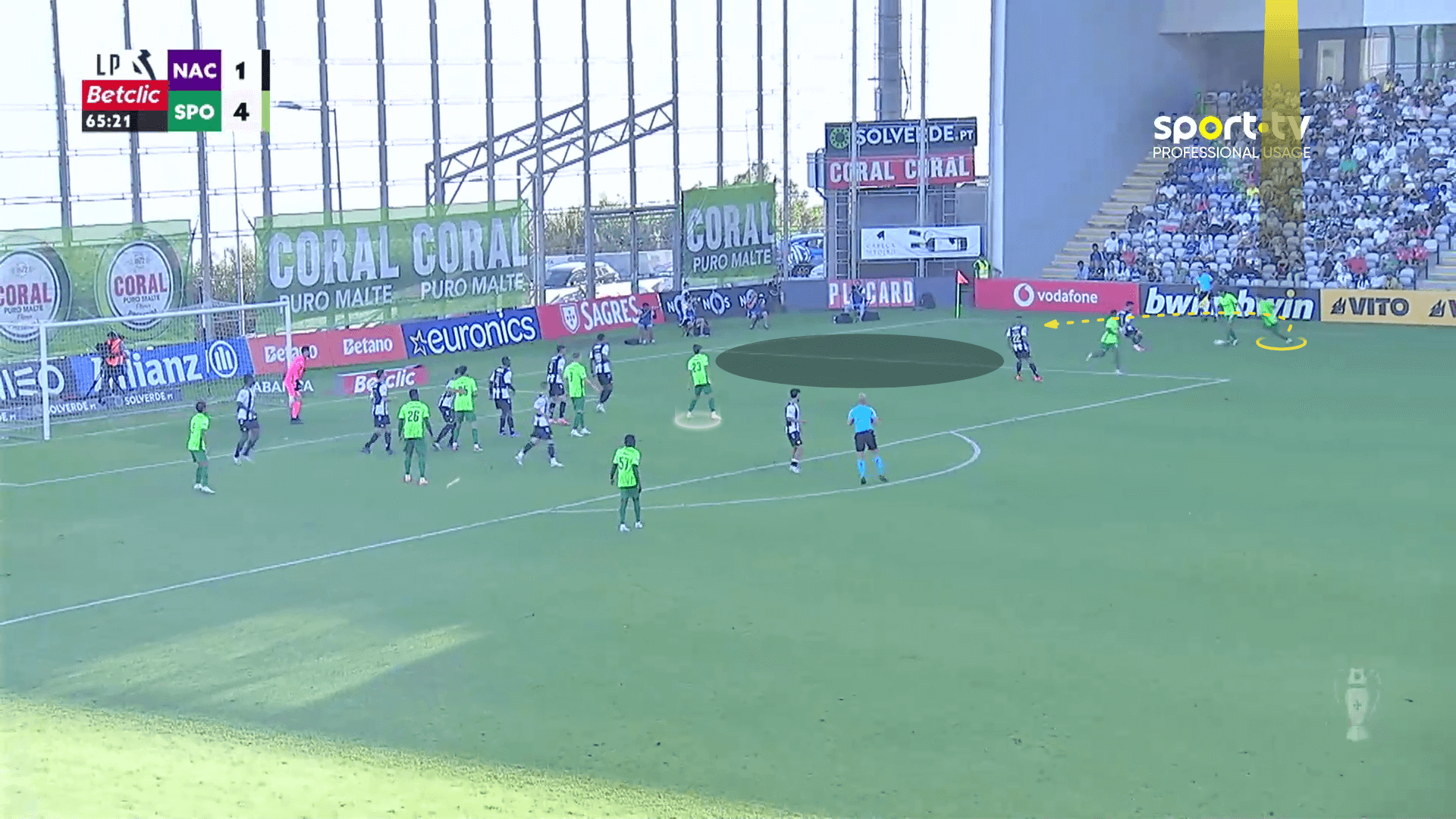
As shown below, this player in white’s second role is to be an option for a cutback pass, which indeed led to a goal.
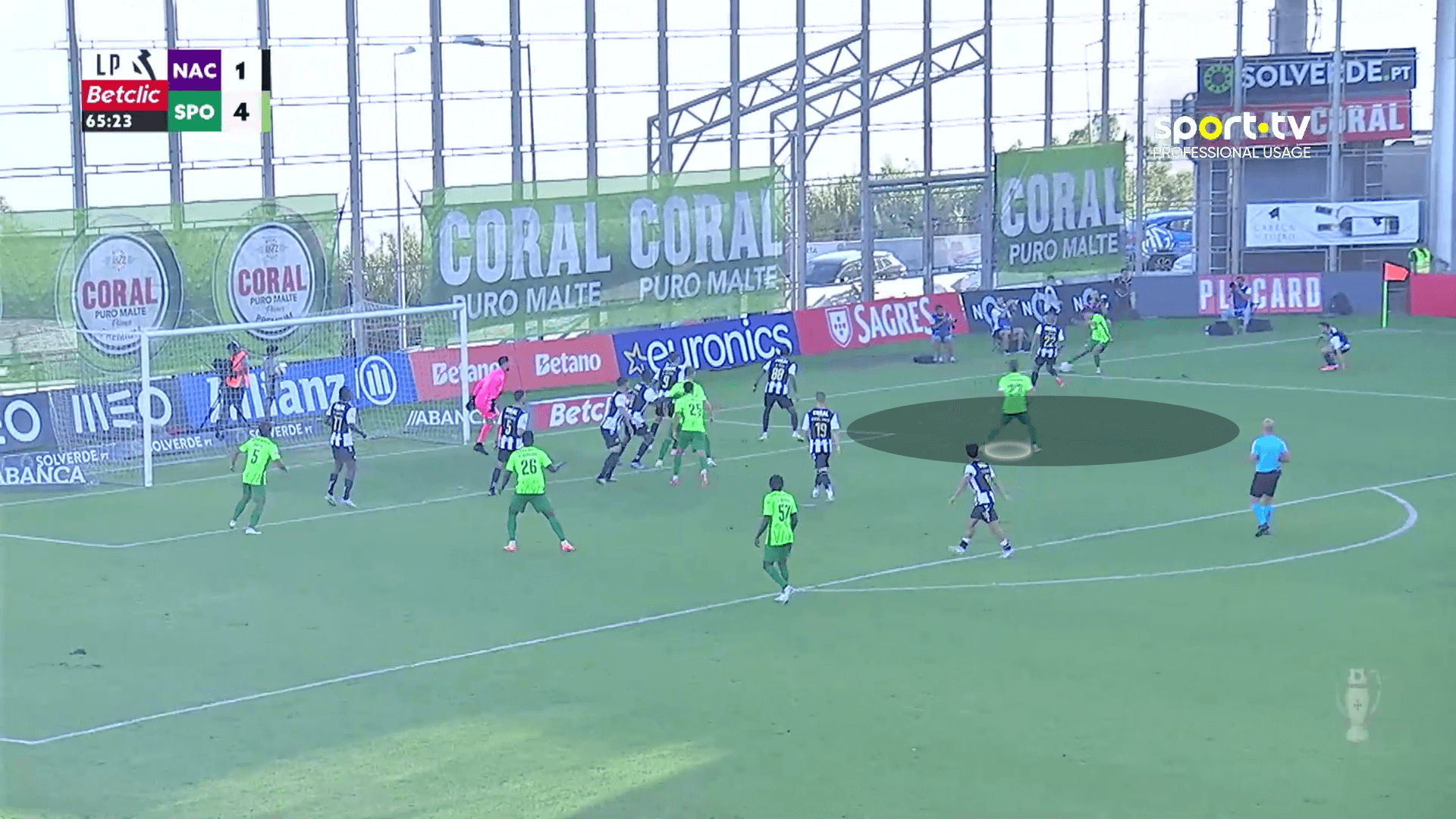
So what did they do when they faced teams that could defend against this overlap?
In the photo below, the same plan is carried out while the opponent asks the rebound defender to go to help with the defender coming from the box.
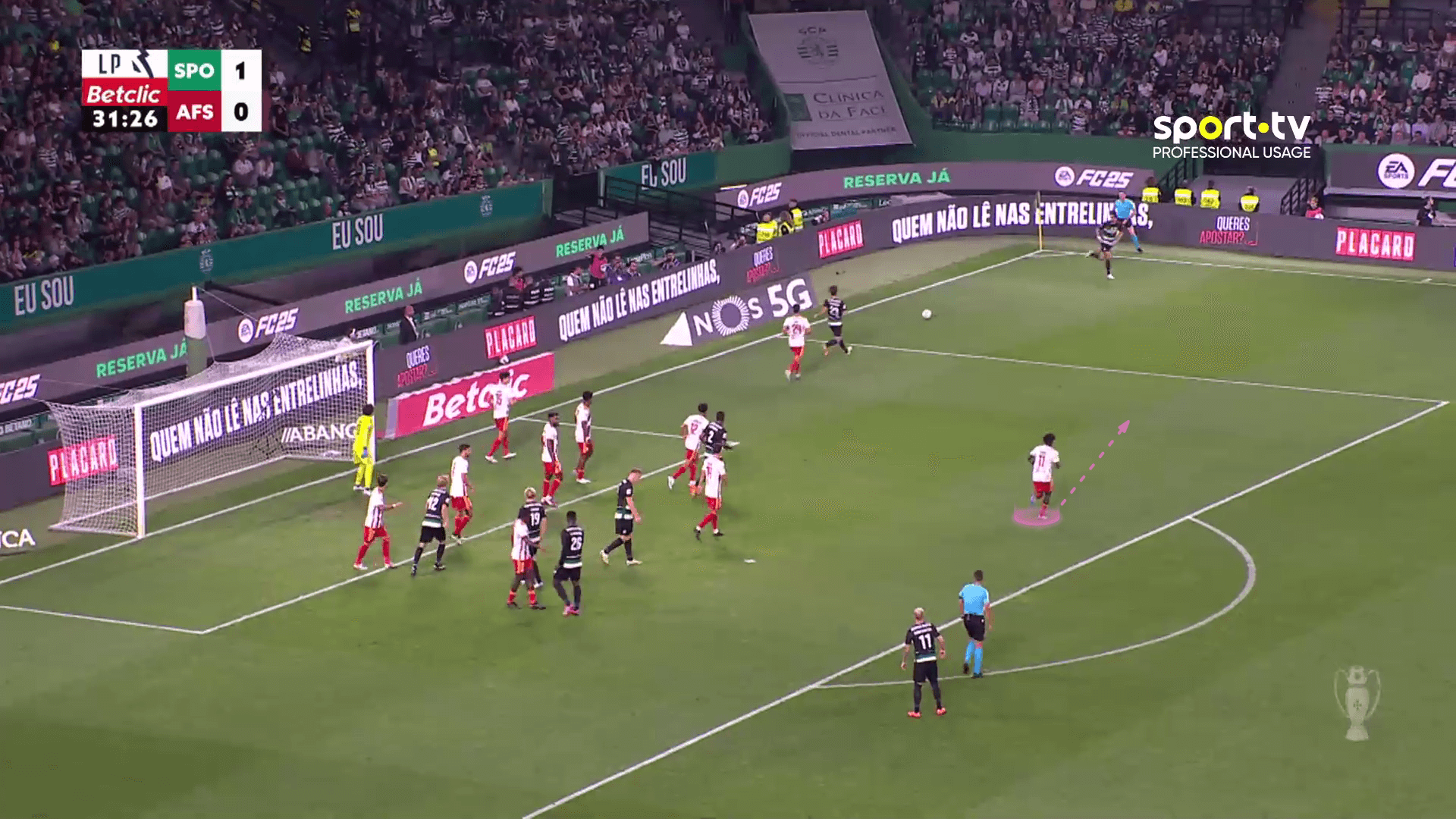
As shown below, the two defenders get so close to cover shadow the area behind them, closing the passing option to the player behind them.
Regarding the overlap, you can see a defender’s hand over the taker so that the coming rebound defender is not dragged, making the area empty for the player who does the overlap.
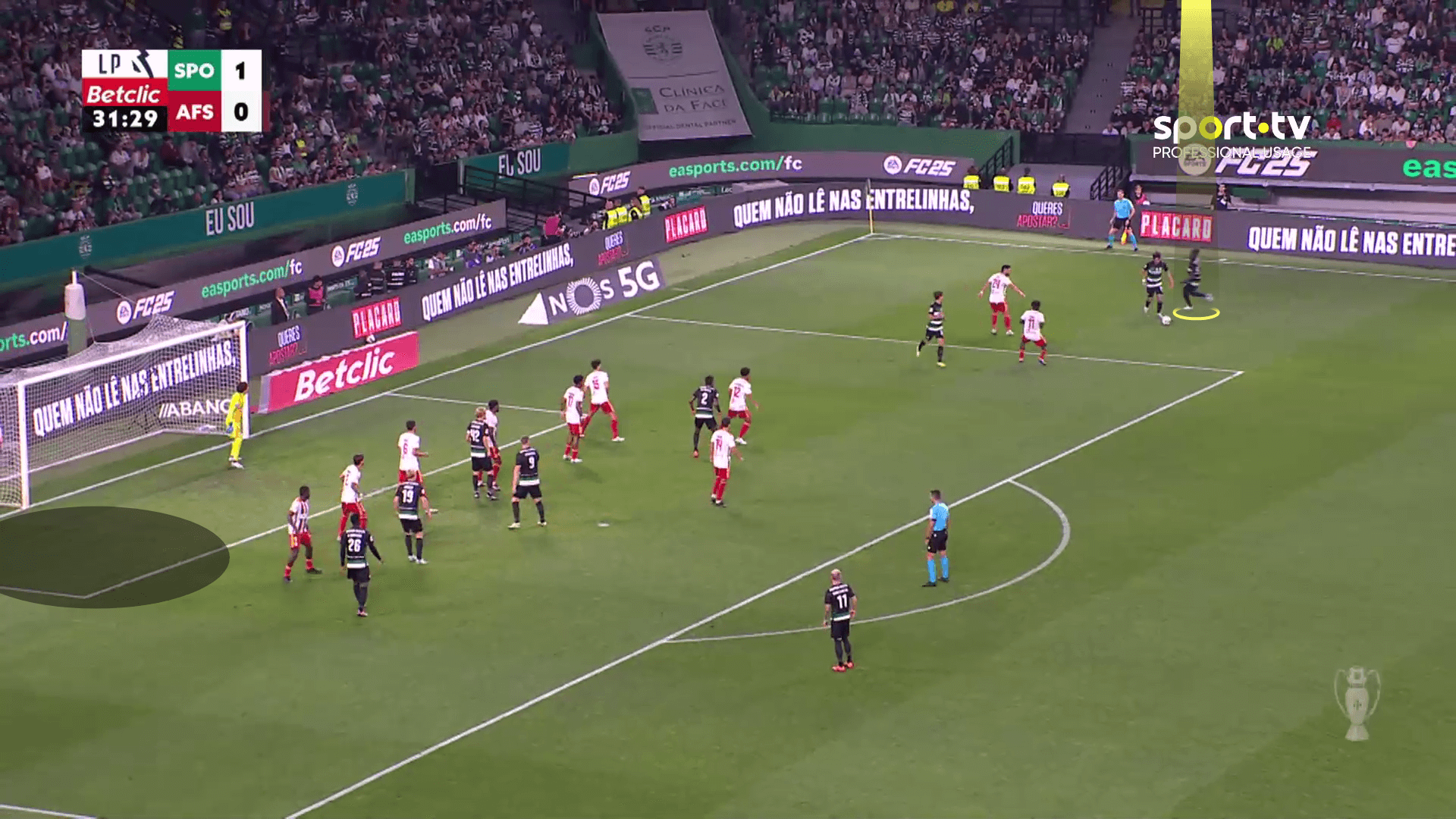
This action is so helpful in delaying the attackers’ reactions, protecting the short areas, but it gives the attacker enough time to cut inside and send a cross from such a dangerous nearer area to the defenders’ blind side on the far post where it is hard to keep tracking the ball and the attackers behind them, as shown below,
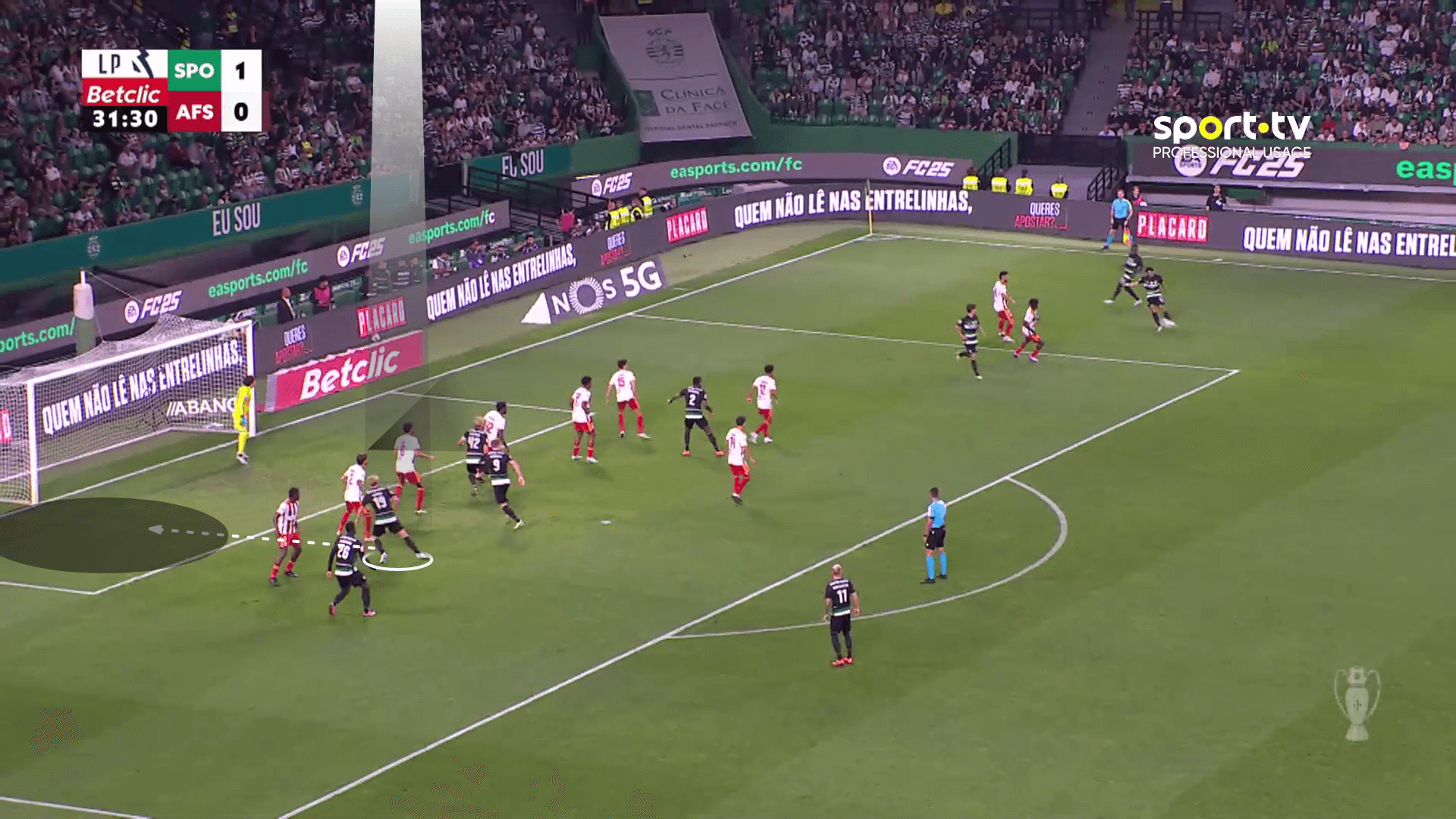
The plan works, leading to a dangerous chance.
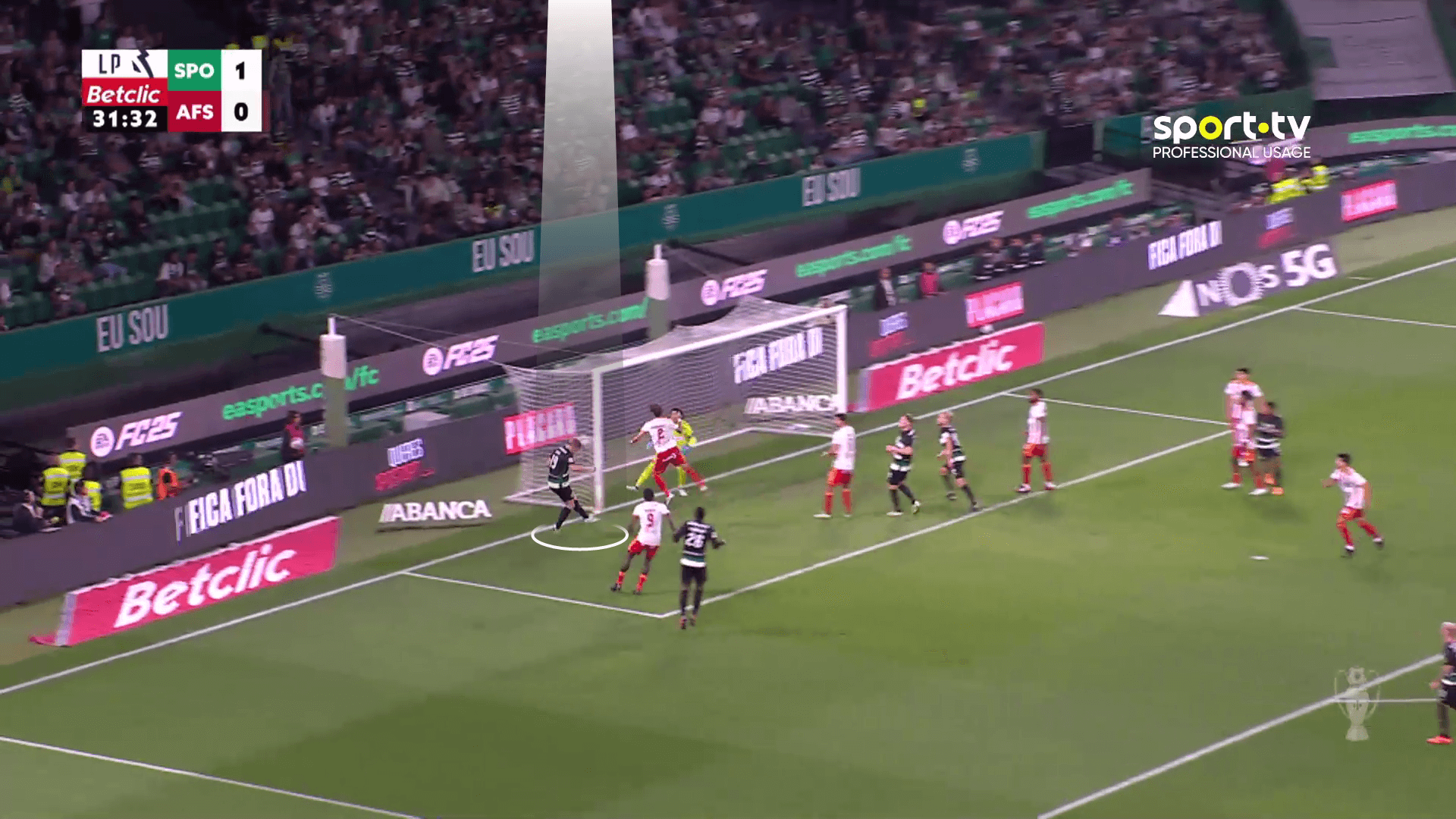
They also had an alternative solution when they faced a team that closed the overlap option.
They relied on this solution when the taker didn’t have enough time and space to send the cross, or they could do that as a variation.
In the photo below, the blue attacker goes shortly, as expected, dragging his marker and the first zonal defender (green) of the three ones, which means that the rebound defender still stands on the edge of the box.
Here, I want you to know that the attacker in white is the targeted one, so let’s track him.
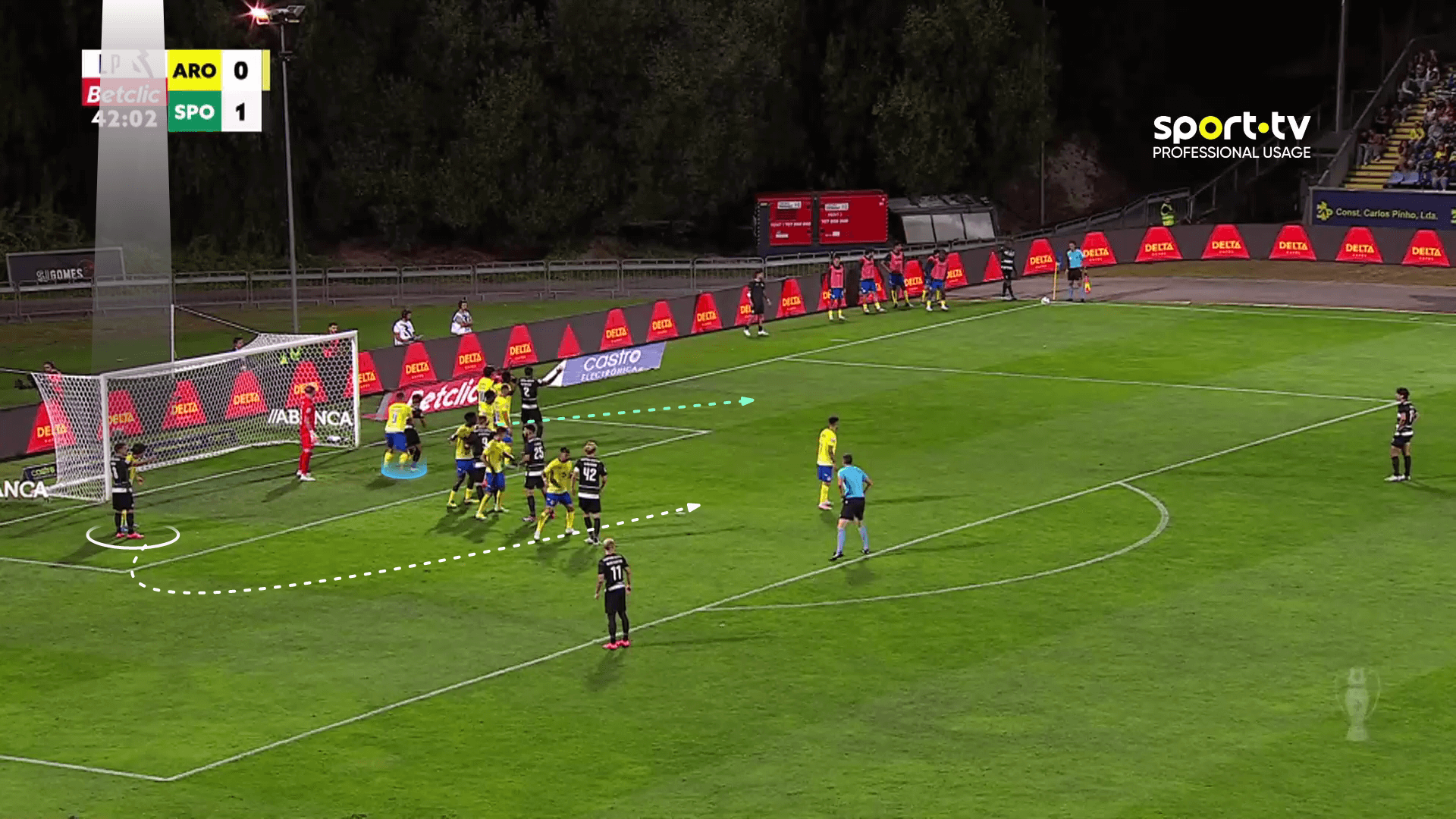
In the photo below, two players defend the short corner roughly while the rebound defender is committed to his assigned area.
There are two zonal defenders (green), and the rest are man markers.
The targeted player (white) runs in a curved way while the two near players block their man markers (orange) to prevent them from going to the targeted area after realising the idea.
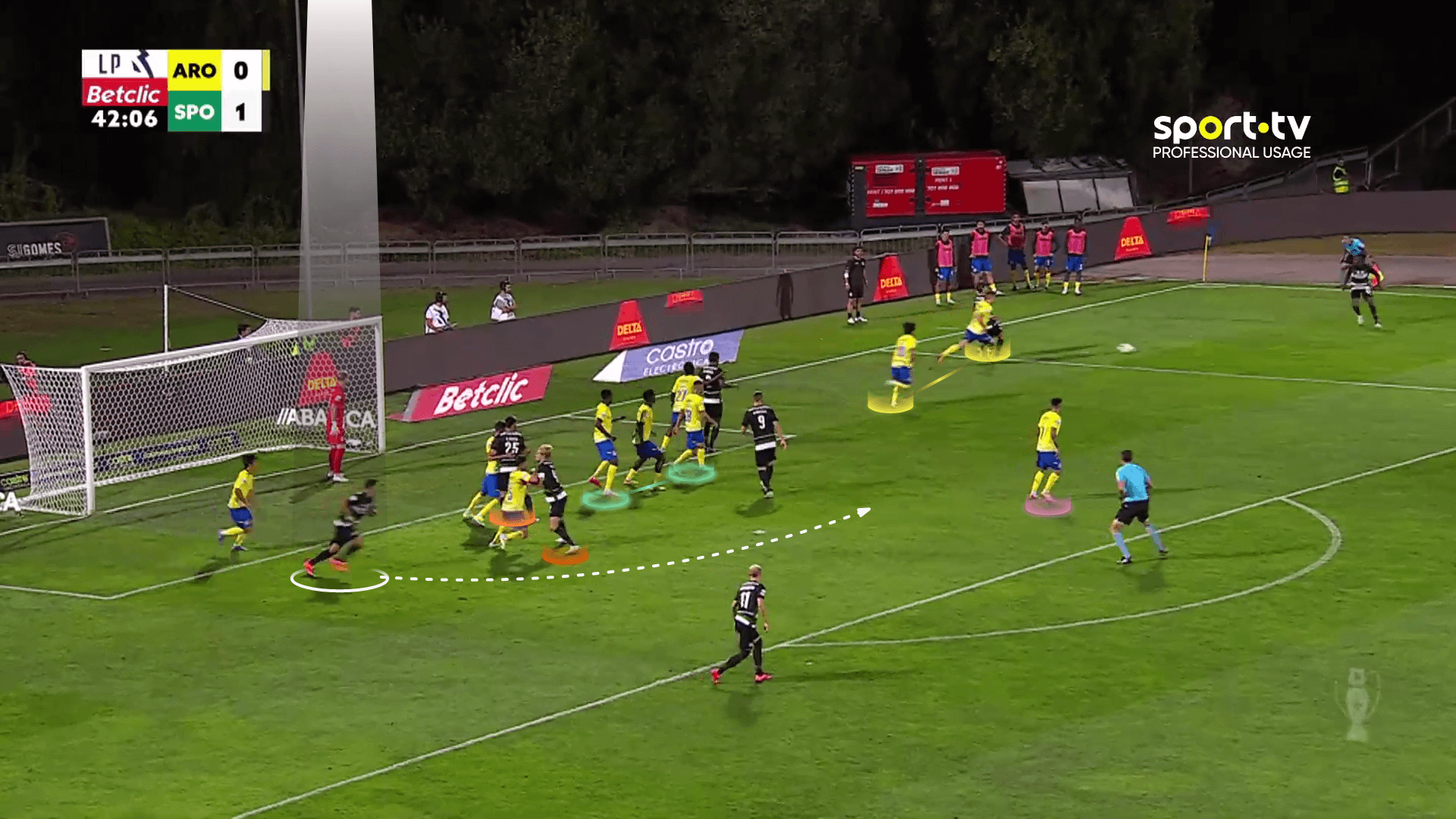
Rúben Amorim’s Use Of The Near Rebound Player
Rúben Amorim also has another idea: exploit an unexpected player who suddenly goes to the short area, but this time, this player doesn’t come from the box.
This player is the near rebound player who moves suddenly to the uncrowded short area, which means that opponents have two solutions: they can follow the rebound defender, leaving the rebound area free for the other Sporting CP rebound player, or they can wait until the assigned player to defend short corners comes from a deep position, as happened below.
The attacker in white still plays the same role, trying to fix any defender and thinking to go to help while three players overload the targeted area on the far post on the zonal defender’s blind side.
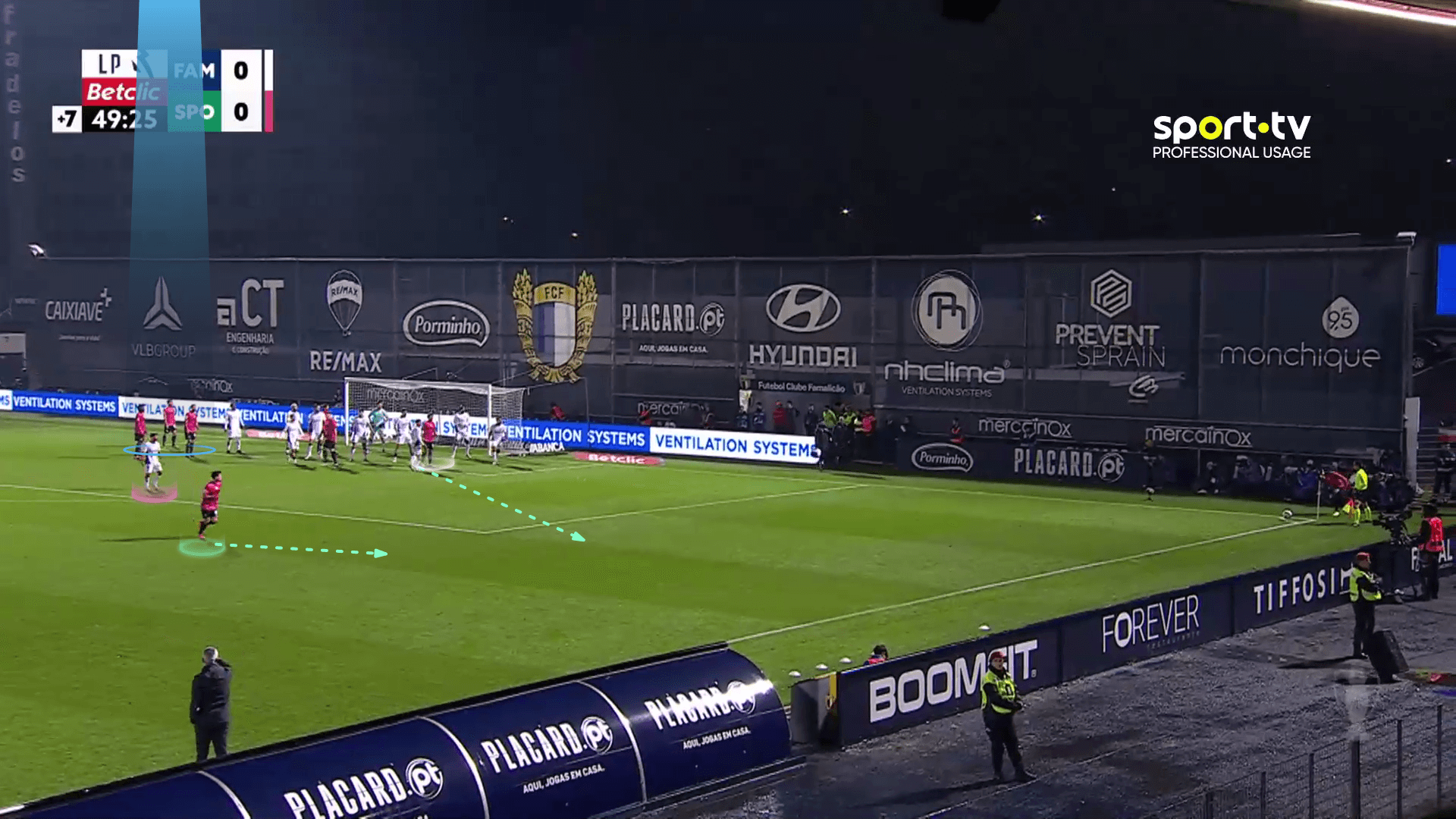
As shown below, the plan works, and it becomes a two-versus-one situation.
The attacker in white makes the first defender of the line hesitant to help.
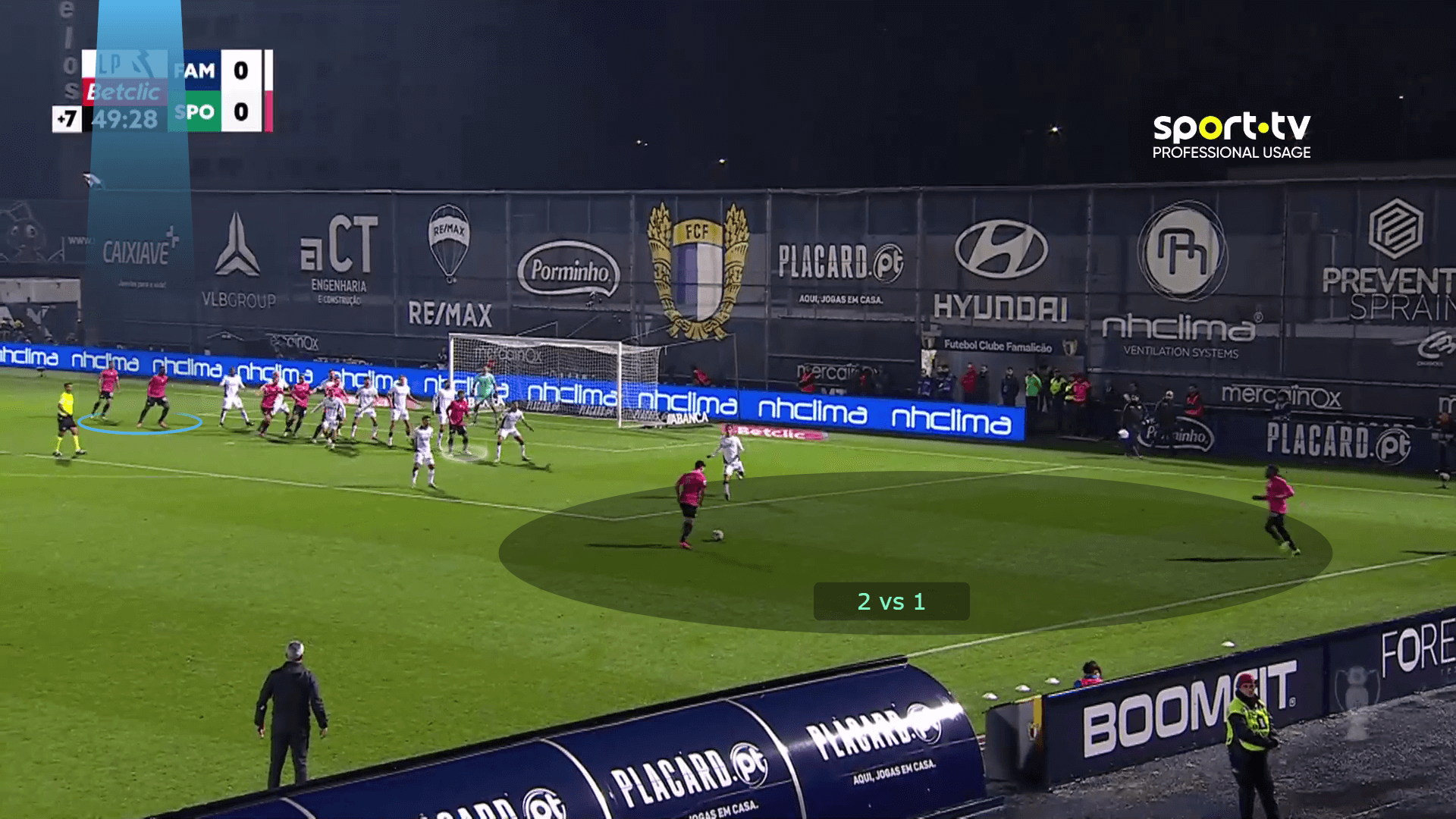
You may ask what would happen if this zonal defender left the white attacker going to help in his quick 2v1 situation.
The same plan is applied in the photo below, so let’s see the result!
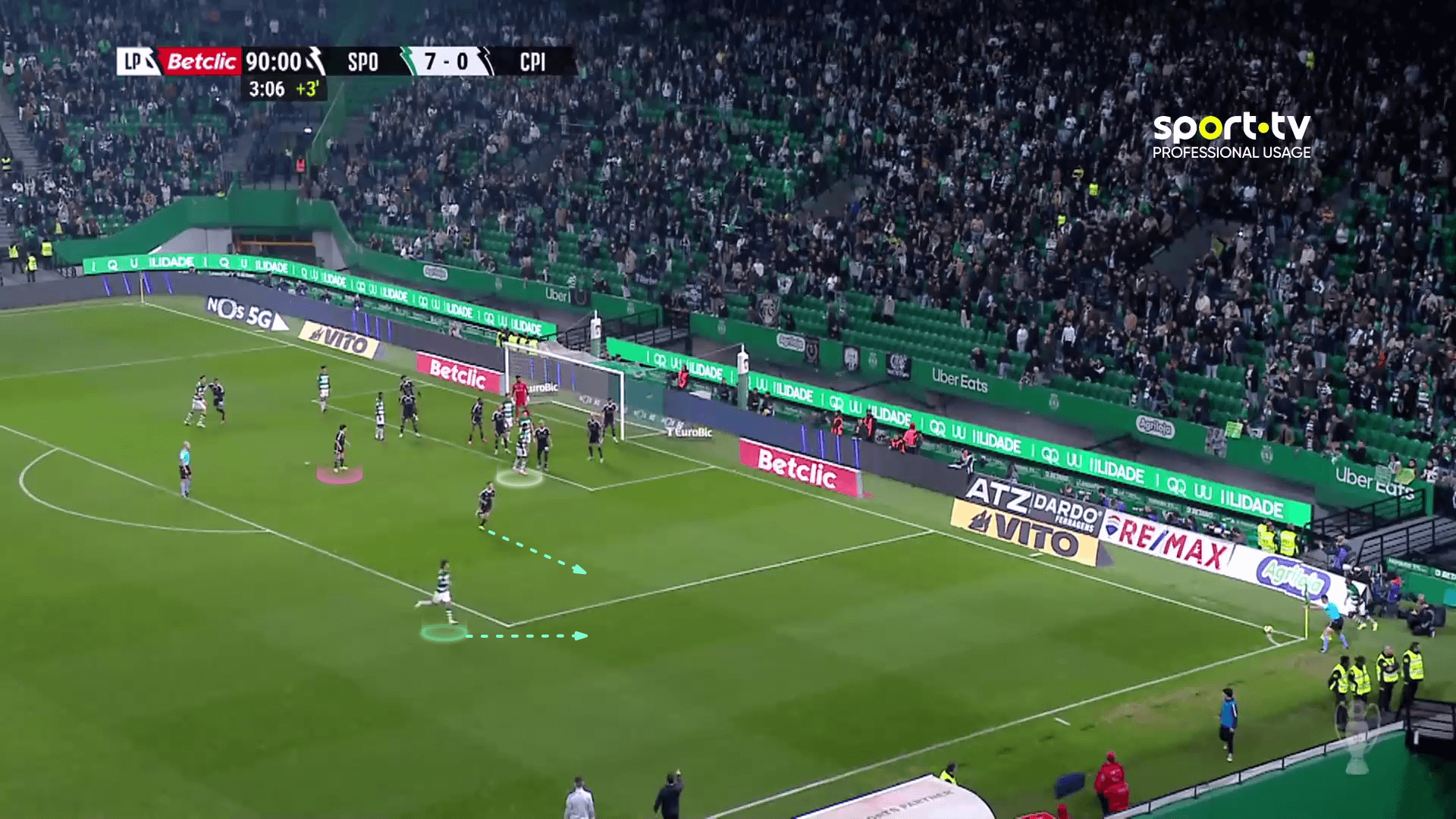
This zonal defender (white) leaves the fixing attacker to help in the probable 2v1 situation, which means that the area shown below will be free for the white attacker.
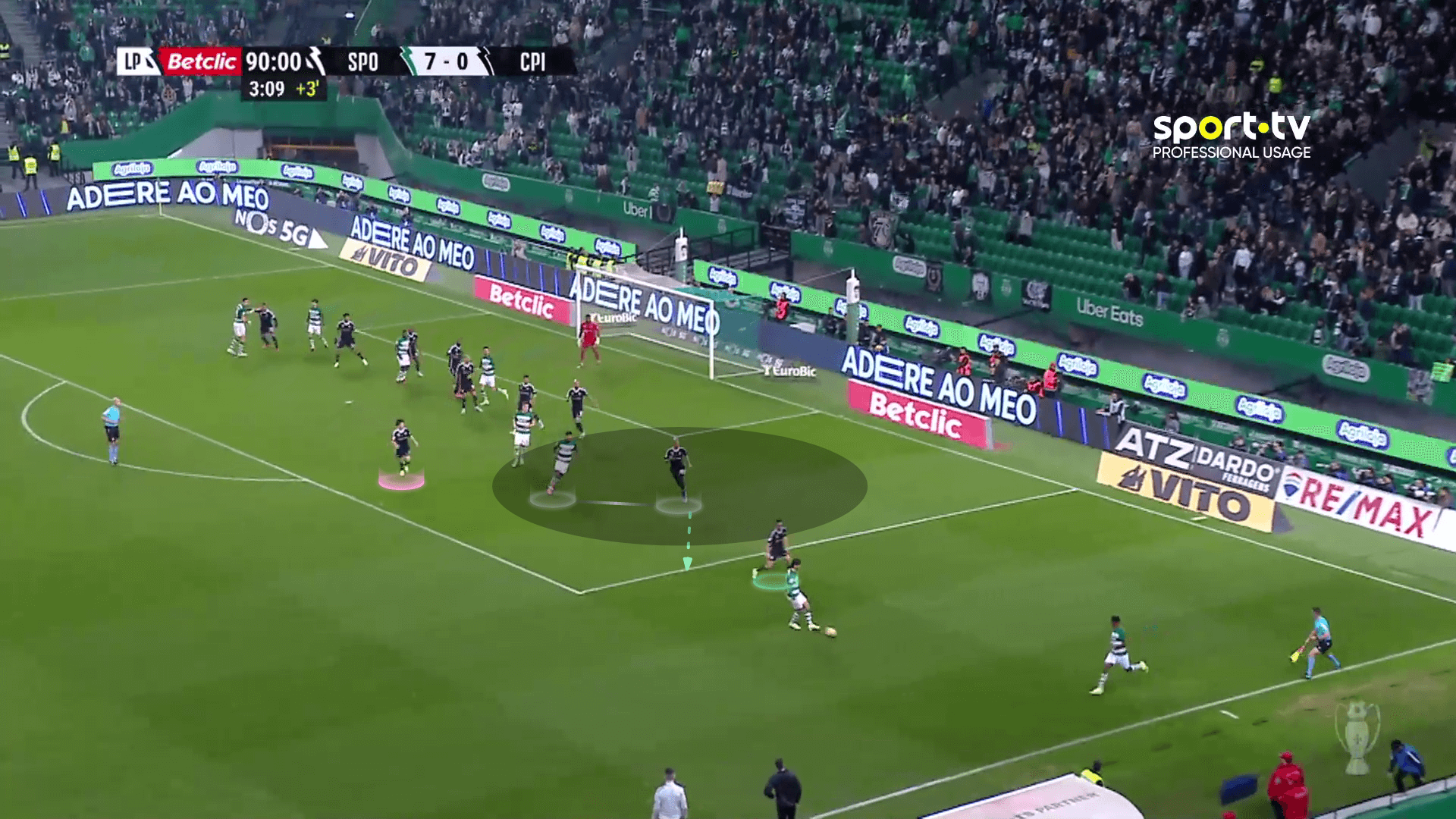
The alternative solution works brilliantly.
The targeted attacker receives a through pass in a dangerous area inside the box, as shown below.
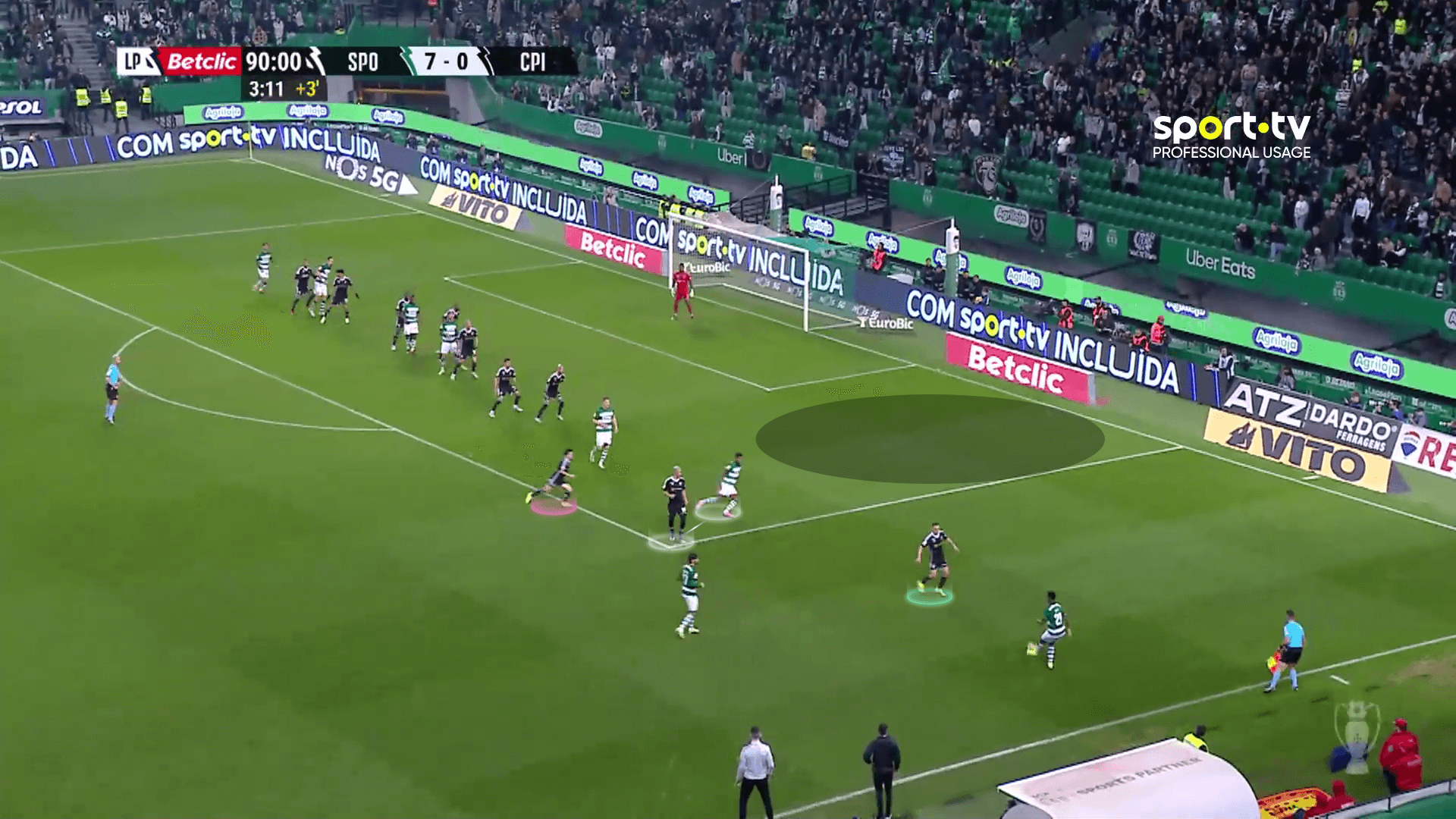
Inside the box, two blue players wait for the grounded cross on the far post while two yellow players are ready for the cutback pass, as shown below.
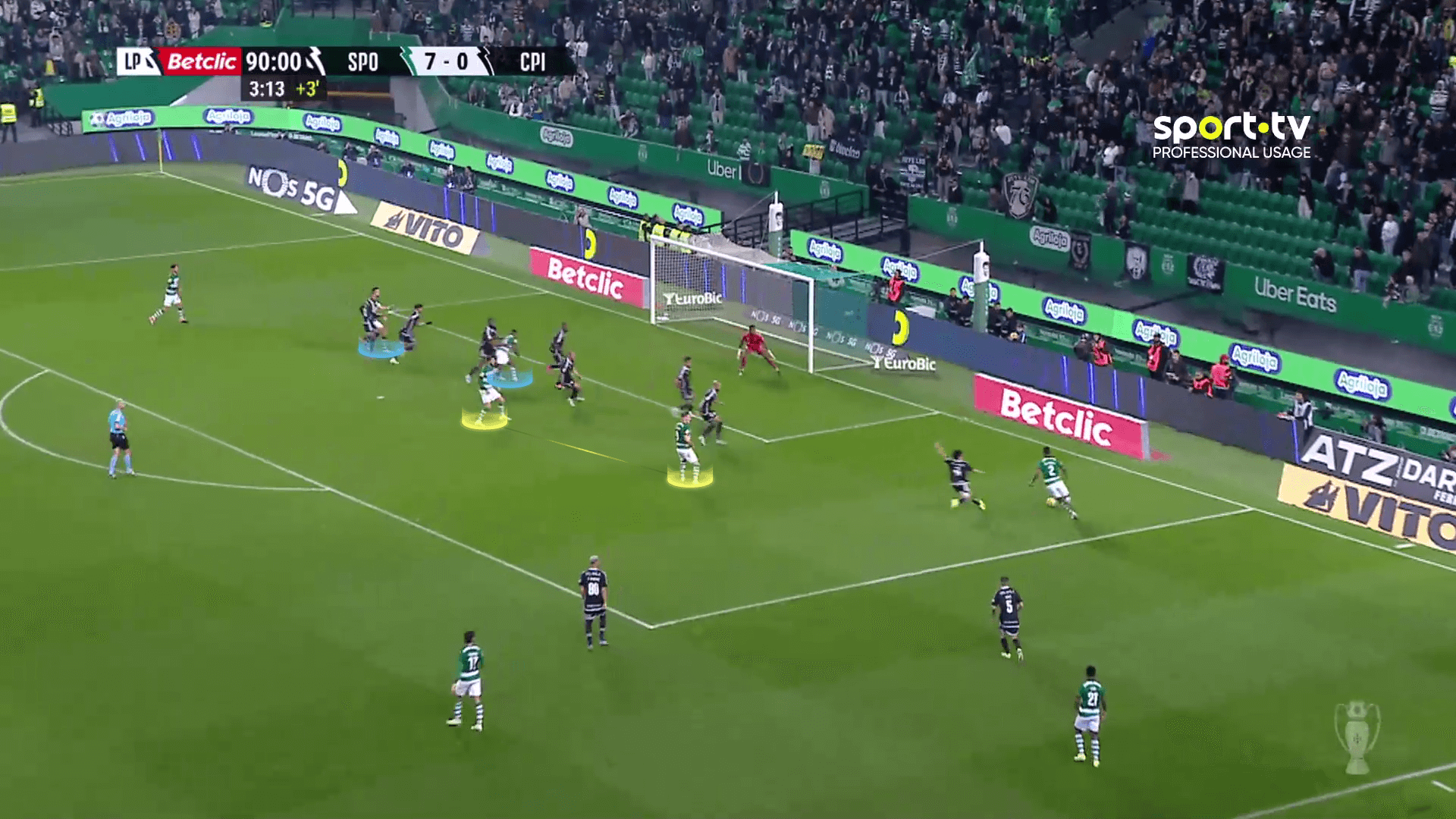
Rúben Amorim’s Use Of The Far Rebound Player
The far rebound player also has a vital role in case any short-corner plan fails.
He starts to drift wide to stretch the width of the pitch on the other side, which helps in ball retention and sustaining pressure, as shown below.
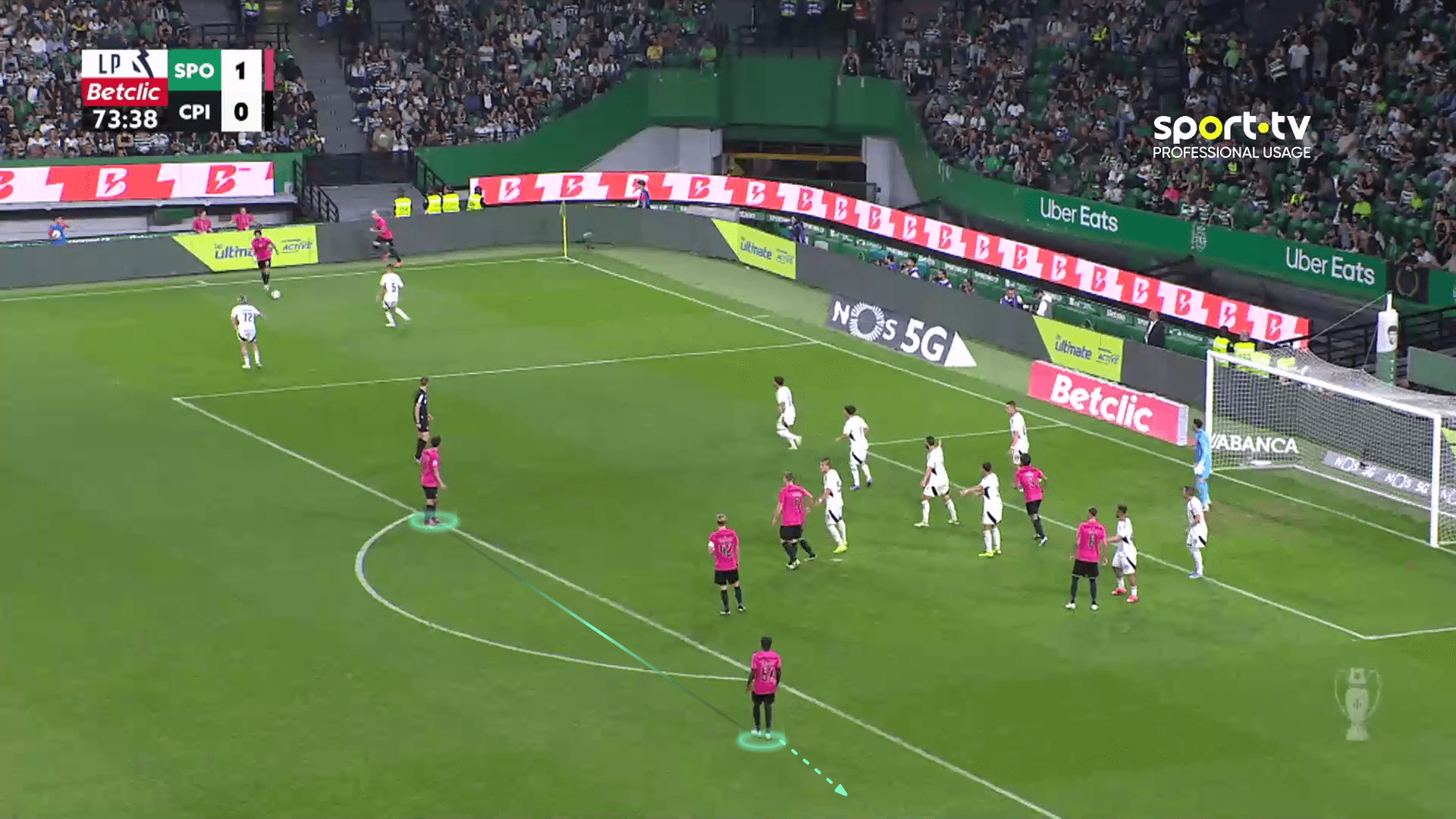
The far rebound player receives a pass on the other side, where the opponent doesn’t have enough players, so he can easily dribble or send crosses while the short-option attacker (blue) cuts inside the defender’s new blind side.
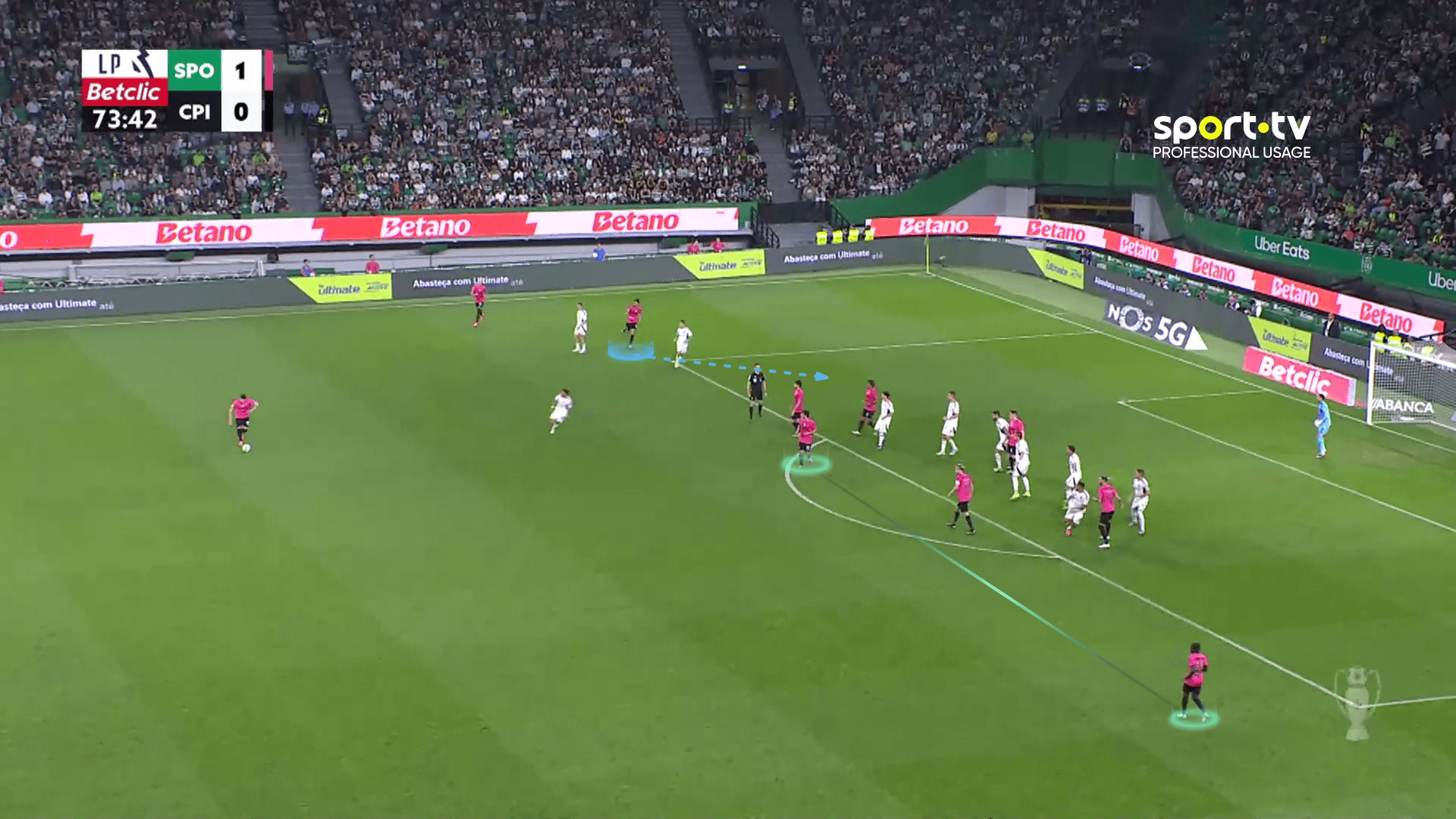
As shown below, the plan of switching the play leads to a change.
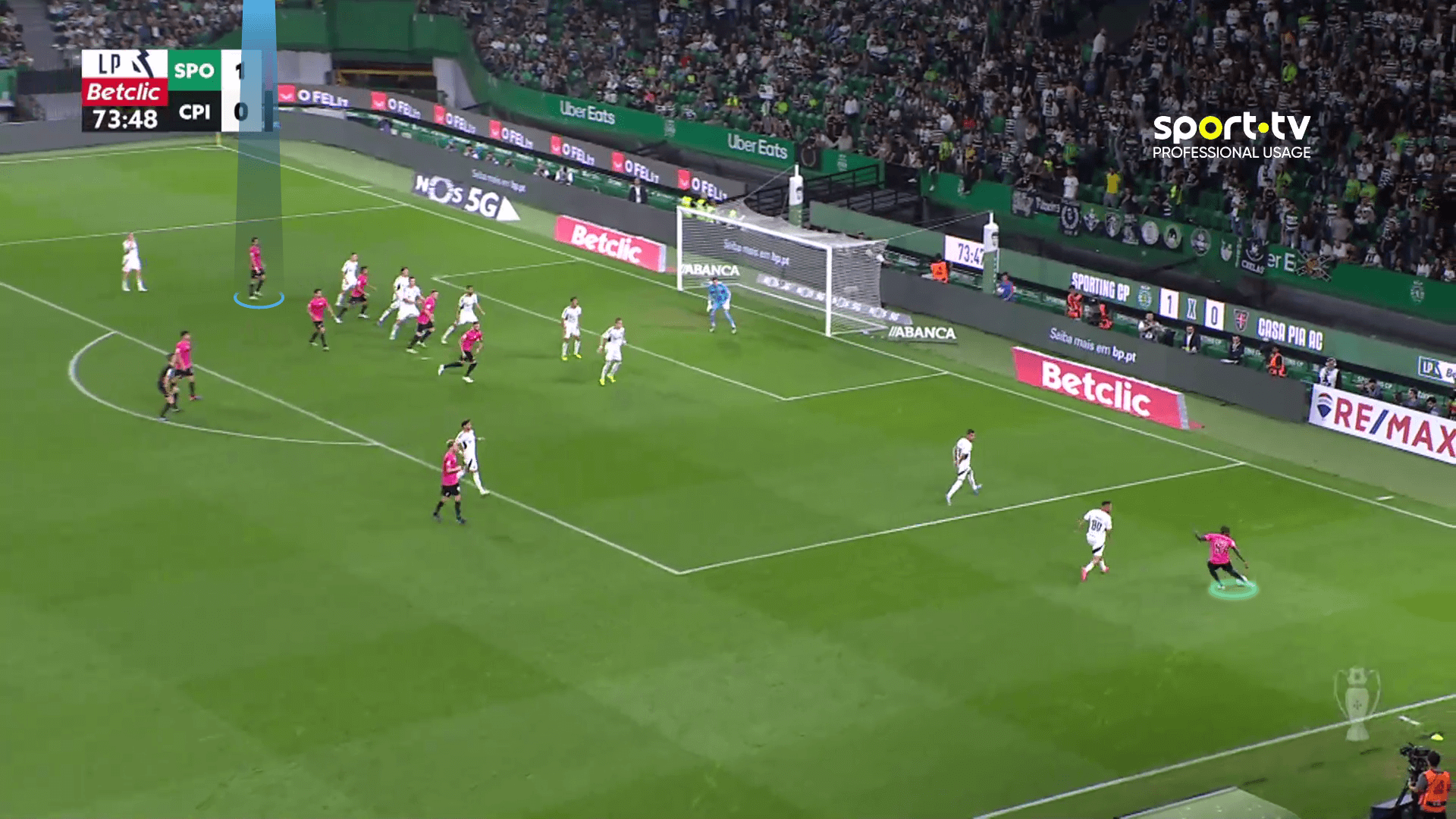
It can also be planned to target him, with all players moving to the near post and the needed blocks, such as the orange block, to the defenders who can go there.
This happens as a variation, especially against teams who depend heavily on the man-marking defending system.
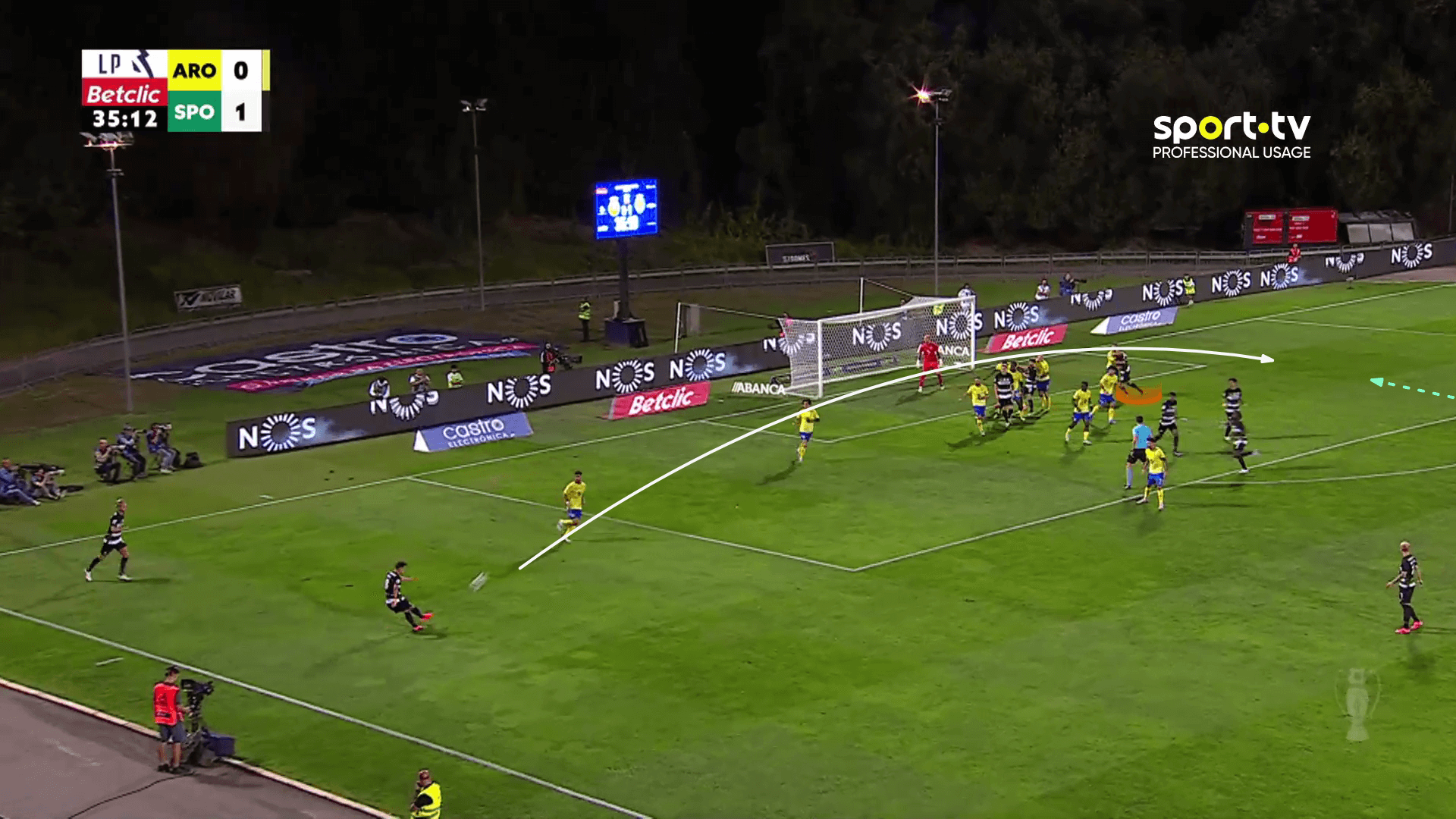
The plan works and ends with a shot, as shown below.
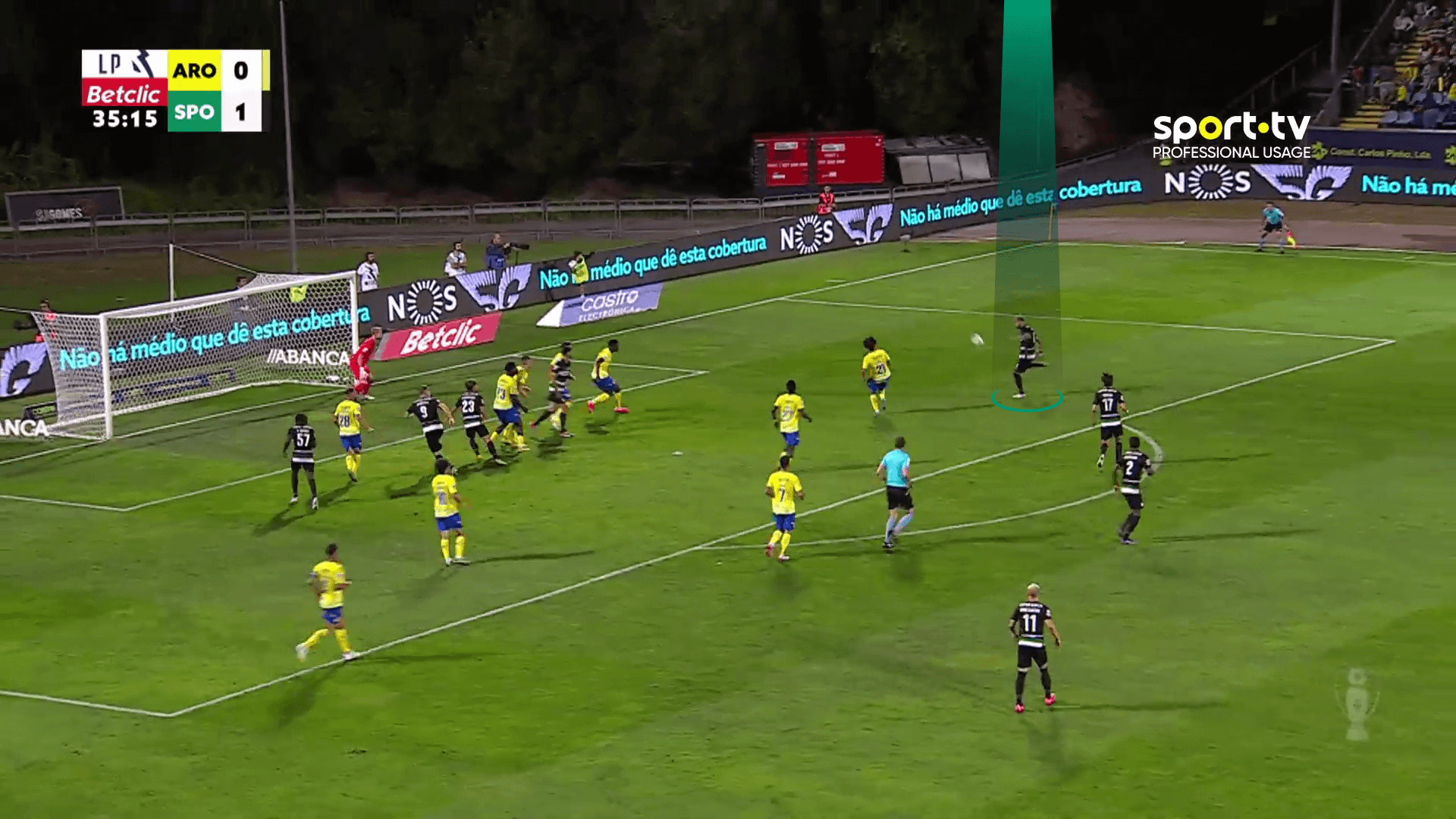
Rúben Amorim Targets The Near Post
It isn’t possible to always play clear short corners because opponents will expect that easily, so he insists on forming a danger on the near post, especially flicks, making the opponent can’t predict whether this explained run leads to a flick and near-post threat or a short corner.
Let’s break that down!
In the first photo below, the blue player makes the same previous run from the first zonal defender’s blind side, but this time to flick the ball.
In contrast, his green teammate runs to fix the zonal defenders on the near post, as done in the second photo, while the others frame the goal, ready for the headed pass.
The third and fourth photos also show that they can use a fake run to drag the first zonal defender (green) to target the area behind him with the two blue players.
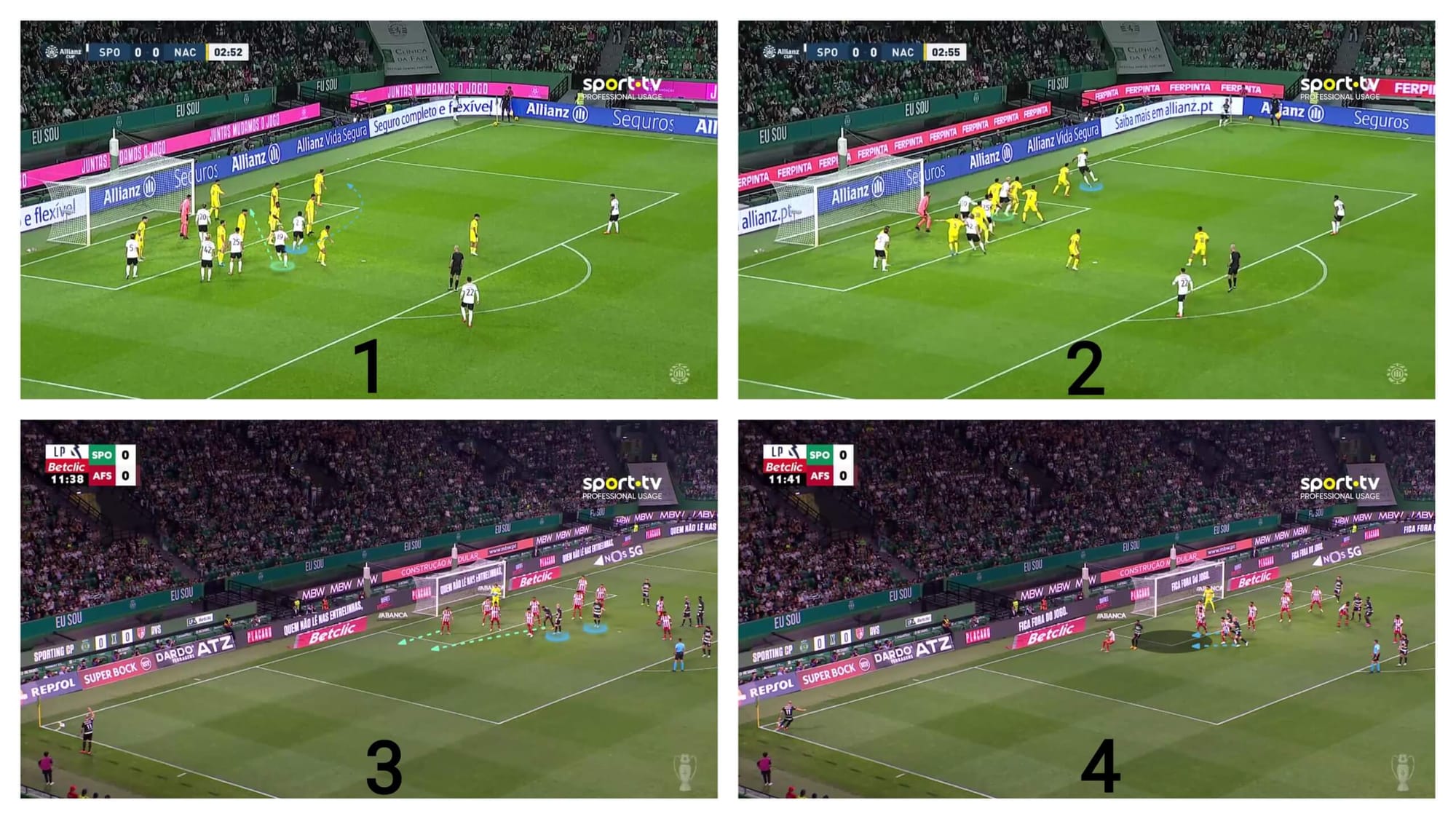
Rúben Amorim Targets The Far Post
As a variation, they may target the far post, especially when they feel that the opponent secures the near post well.
As in the photo below, the green player blocks the goalkeeper to prevent him from claiming the ball, while two blue players block the last zonal defenders.
Two man markers mark the last two attackers, so the yellow attacker, the targeted one, runs around his teammate in a curved run in the opposite direction of the ball during the taker’s movement.
This makes it difficult for his marker to track the ball and him simultaneously, so he will lose contact with him.
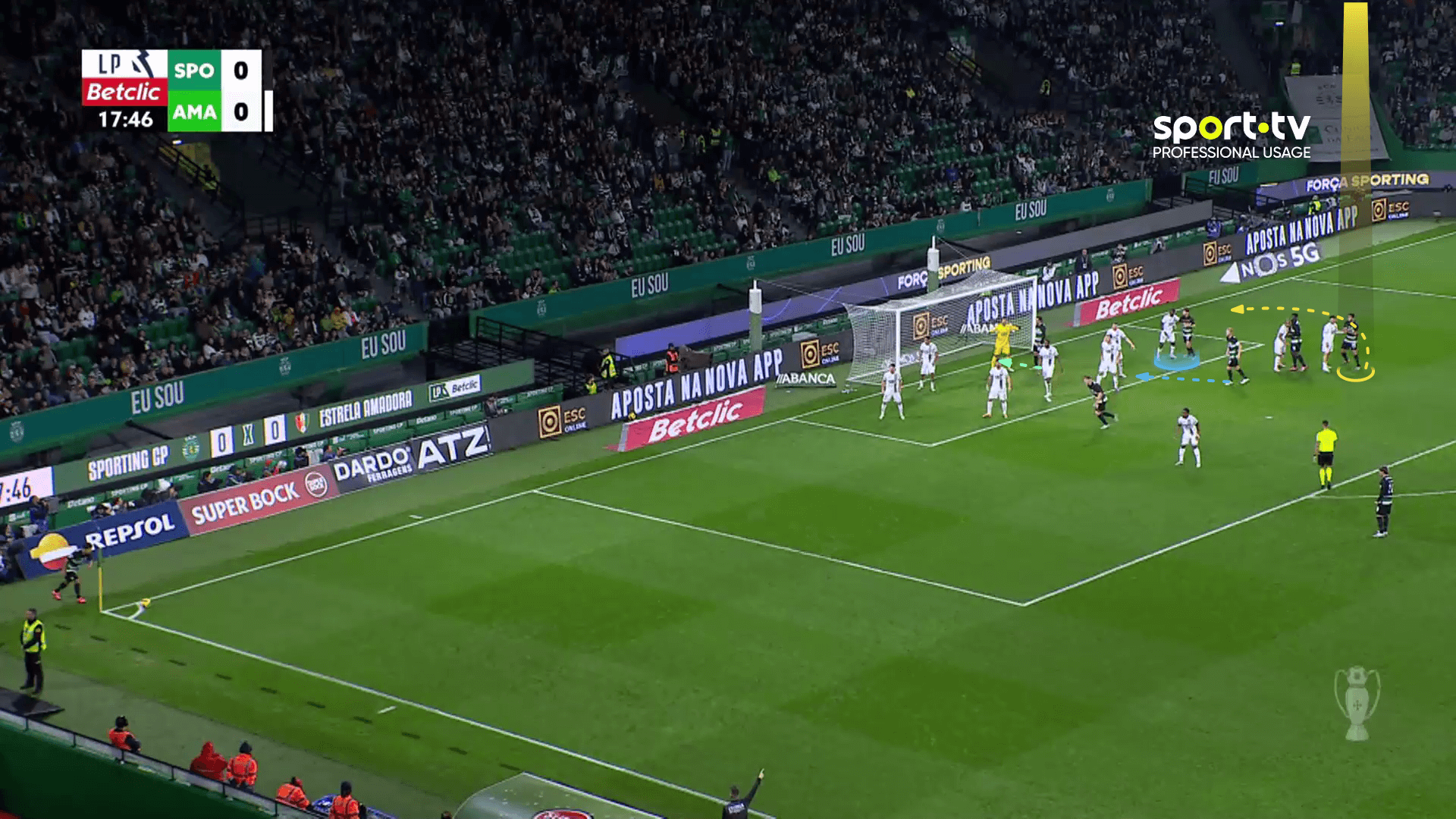
The plan works, and the targeted player escapes from his man marker.
The two blue players block the last zonal defenders; a green block to the goalkeeper is also shown below.
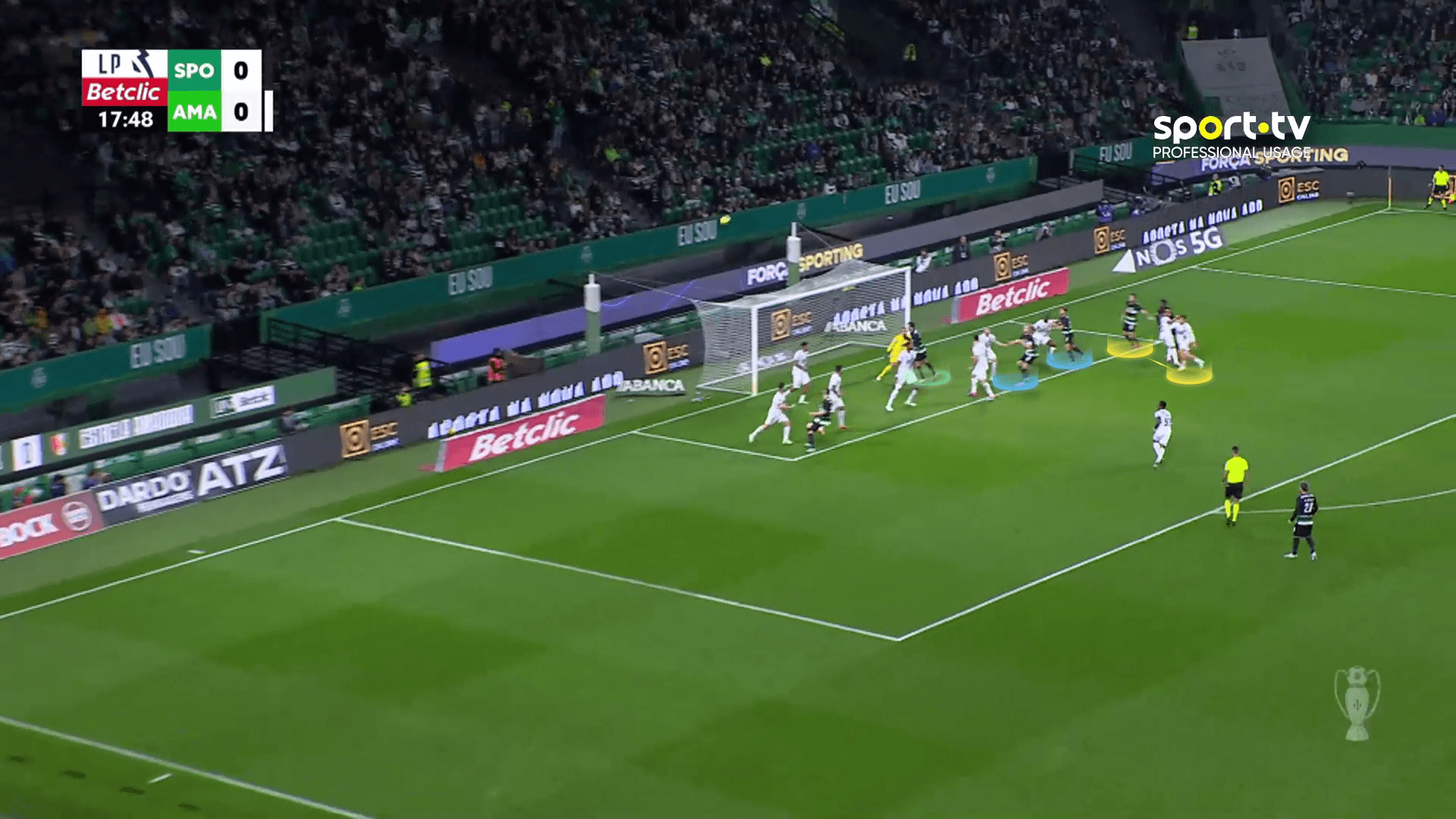
Conclusion
In this analysis, we have shown the most distinct tactics of Rúben Amorim in attacking corners and what Manchester United’s fans can expect from him concerning set-pieces.
We all know that the Premier League is different from Primeira Liga, so only time will tell if these set-piece tactics tactics will be as successful in England.






Comments